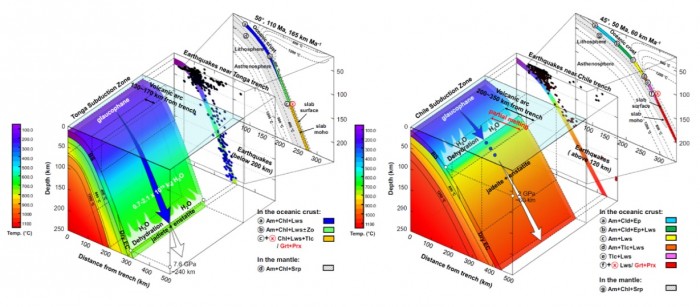“The stability of subducted glaucophane with the Earth’s secular cooling”
- Authors
Y. Bang, H. Hwang, T. Kim, H. Cynn, Y. Park, H. Jung, C. Park, D. Popov, V.B. Prakapenka, L. Wang, H.-P. Liermann, T. Irifune, H.-K. Mao, Y Lee*
- Journal
Nature Communications
Vol.12·1496, 2021.03 - DOI
Abstract
The blueschist to eclogite transition is one of the major geochemical–metamorphic processes typifying the subduction zone, which releases fluids triggering earthquakes and arc volcanism. Although glaucophane is an index hydrous mineral for the blueschist facies, its stability at mantle depths in diverse subduction regimes of contemporary and early Earth has not been experimentally determined. Here, we show that the maximum depth of glaucophane stability increases with decreasing thermal gradients of the subduction system. Along cold subduction geotherm, glaucophane remains stable down ca. 240 km depth, whereas it dehydrates and breaks down at as shallow as ca. 40 km depth under warm subduction geotherm or the Proterozoic tectonic setting. Our results imply that secular cooling of the Earth has extended the stability of glaucophane and consequently enabled the transportation of water into deeper interior of the Earth, suppressing arc magmatism, volcanism, and seismic activities along subduction zones.












